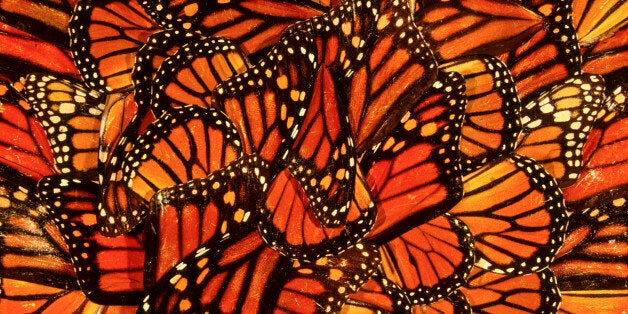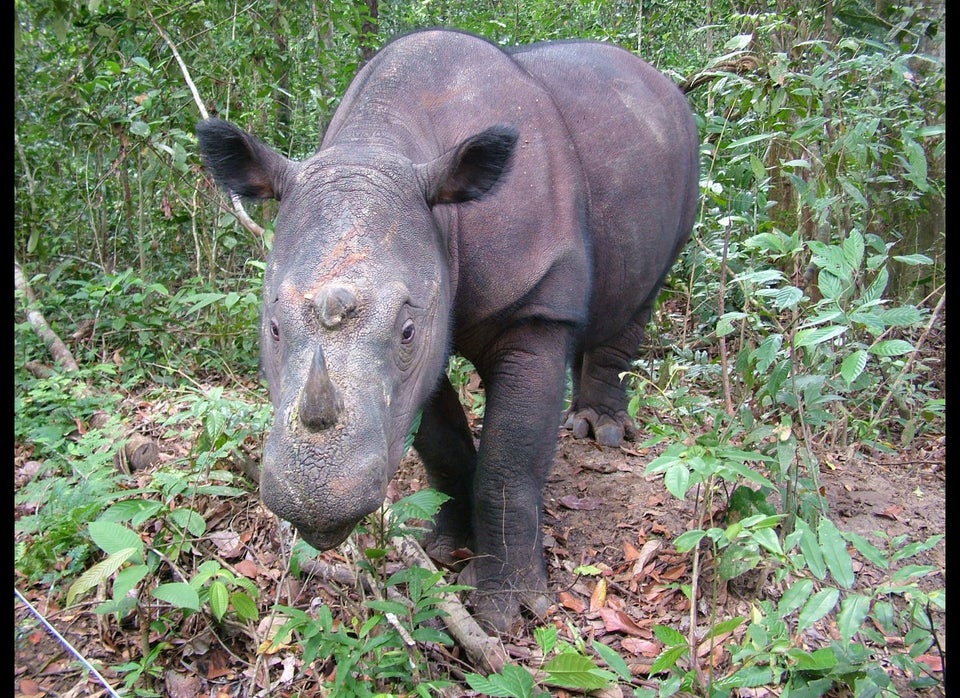
MEXICO CITY -- Forty years ago the winter habitat of the monarch butterfly in Mexico was supposedly discovered. After searching for decades, on January 9, 1975 the Canadian scientist Fred A. Urquhart, an entomologist at the University of Toronto's Scarborough College, received a phone call from an American living in Mexico City named Kenneth Brugger, married at the time to Mexican-born Cathy Aguado (known today as Catalina Trail), who told him that "We have located the colony. We have found them -- millions of monarchs -- in evergreens beside a mountain clearing."
The "discovery" had taken place a week earlier in northern Michoacan, in an oyamel forest on Cerro Pelon, 10,000 feet up in the mountains of Mexico's Transvolcanic Belt, and a few days later the Bruggers happened upon other monarch roosts at El Rosario and Chincua. The Bruggers were volunteer "research associates" in Urquhart's longstanding monarch tagging program, in which tiny labels reading "Send to Zoology University Toronto Canada" were stuck onto thousands of southbound migrating butterflies. But it was only a year after receiving the news that Urquhart and his wife visited the site, and a full 20 months after the find that a stunning photo of Cathy Brugger amidst thousands of monarch butterflies perched on trees and on her, and the headline "Discovered: The Monarch's Mexican Haven" were emblazoned on the cover of the August 1976 issue of National Geographic.
In his article, Urquhart did not reveal the location of the monarch sites the Bruggers had told him about. When asked for details by Dr. Lincoln Brower, today the world's foremost monarch butterfly expert, and colleague Dr. William Calvert, Urquhart steered them to a bay on the Gulf Coast of Florida. Brower, Calvert and photographer John Christian figured out the general area from some clues in Urquhart's article and a paper he published in the Journal of the Lepidopterists' Society, and they located the sanctuaries on New Year's Eve of 1976.
In his article, Urquhart affirmed that "Cathy Brugger and her husband Kenneth discovered the site where millions rendezvous." This undisputed claim that has been widely repeated in the Canadian, U.S. and Mexican media would lead one to believe that the overwintering sites of the monarch butterfly in Mexico were unknown to Mexicans before the Bruggers made their call to Urquhart.
This January, as the 40th anniversary of the "discovery" is commemorated, isn't it time to revise the telling of history? What date should we put on the discovery -- that generations of Mexicans have made for themselves -- of a phenomenon that has been taking place for thousands of years?
We local residents always knew where the monarchs settled at the end of October, but we had no idea where they had come from, nor where they went each spring. The Canadian and American lepidopterists knew that. Just as the discovery of America is a misnomer -- because America had been discovered ever since it was inhabited by human beings, and what Columbus so momentously initiated was a meeting of two worlds -- so we can say that what occurred in January 1975 was a mutual enlightenment for people at both ends of the fabulous 3,000-mile-long migration of the monarch butterfly.
In celebration of the arrival every autumn of millions of monarchs to Altamirano Hill and the streets of Contepec, the village in Michoacan where I grew up, I wrote in the autobiographical El poeta niño (The Child Poet), published in 1971:
In Contepec that morning, thousands of monarch butterflies were crossing the village. The air, like a river, bore currents of butterflies through the streets, above the houses, between the trees and people as they made their way south.
I have said and written many times that the presence of the monarchs in my town is part of my childhood memories (I was born in 1940), and I have described the yearly pilgrimages made by Contepec's residents to the Plain of the Mule on the summit of Altamirano to picnic and glory in the spectacle
"Blanketing a thousand trees, monarchs converge in November on a mountain slope at 9,000 feet," wrote Urquhart 40 years ago. In La montaña de las mariposas (Butterfly Mountain), I marveled at the abundance of butterflies we observed during a school trip in the 1950s: "The monarchs were there, a million-strong colony in the sun-swept patches of the ancient crater." I return to these memories as if to a lost world.
In 1996, the butterfly population in the Monarch Butterfly Biosphere Reserve was estimated at one billion, occupying 21 hectares of forest.
The 2013-2014 population plummeted to 33 million, covering 0.67 hectares, the lowest ever in the 20 years since measuring and counting began.
The main culprit for this precipitous decline is no longer logging in the reserve (although that still takes place) but the huge increase in land planted with genetically modified, herbicide resistant soybean and corn crops (93 percent of total soybean acreage and 85 percent of corn acreage in 2013) in the U.S. Corn Belt. Relentless spraying of glyphosate herbicides on the fields has destroyed the once abundant milkweed, the only plants that monarch caterpillars can eat. The monarch butterfly is literally being starved to death.
Before Christmas, I visited Sierra Chincua and learned that butterflies were on less than half a hectare of trees. On Dec. 29, on national television news, an official in charge of the Piedra Herrada sanctuary said that fewer than 30 trees had monarch clusters. Ejidatarios, the locals who own the land, told me the monarchs were sparse this year. In El Rosario, the butterflies were scattered, either very high up or in the ravines. Climate change is a threat throughout the monarchs' migratory route, and an unusual number of cold fronts hitting the area this year is worrying. The day after the news report, the director of the reserve was quoted by AP as feeling "encouraged, because we've seen more." Monarch enthusiasts are anxiously awaiting release by WWF Mexico and the reserve of this year's winter colonies count to learn how things stand, and scientists are eager to have access to the hard data.
Meanwhile, in the wake of last year's bad news, there has been an upsurge in home planting of milkweed in the United States, but unfortunately much of it has been tropical milkweed (Asclepias curassavica), identified by Brower and scientists such as Dara Satterfield as a direct threat to the monarchs because it does not die back in the winter, allowing butterflies to halt their migration and breed all year round, thus making them more susceptible to the deadly protozoan parasite Ophryocystis elektroscirrha.
Native milkweed, specific to each part of the country, is what individuals should be planting, while we wait for action on a larger scale in the United States by the High Level Federal Monarch Working Group, which includes the Forest Service, the National Park Service, the Bureau of Land Management, the Federal Highway Administration, the Natural Resource Conservation Service, and other agencies, as well as entomologists Karen Oberhauser and Scott Hoffman Black.
The challenge is no less than restoration of millions of acres of monarch habitat. The survival of the monarch butterfly migration will depend on measures taken in Canada, the United States and Mexico. As the U.S. Fish and Wildlife Service said in its December 29, 2014 response to a petition from the Center for Biological Diversity, the Center for Food Safety, the Xerces Society and Lincoln Brower, "This journey has become more perilous for many monarchs because of threats along their migratory path and on their breeding and wintering grounds."
USFWS announced it will conduct a status review of the monarch butterfly to consider listing it as a threatened species under the Endangered Species Act.
The three NAFTA leaders will meet in Canada later this year. At last year's summit in Mexico, in reply to our letter from scientists, writers and artists from around the world, the so-called "Tres Amigos" agreed to cooperate "to ensure the conservation of the Monarch butterfly, a species that symbolizes our association."
And I am left wondering if the monarch colonies will ever return to Altamirano Hill in Contepec, where they have been absent for years.
Homero Aridjis is a poet, novelist, environmentalist and former Mexican ambassador to UNESCO. He has just published "María la Monarca," the first children's story about monarch butterflies written in Spanish.

